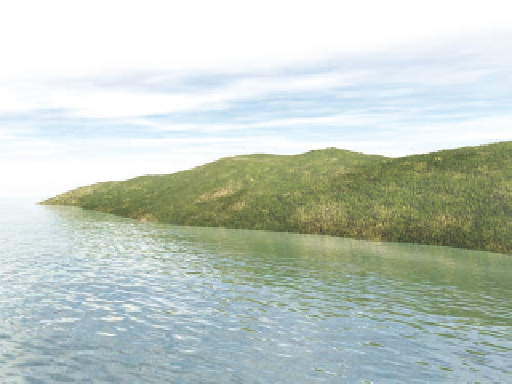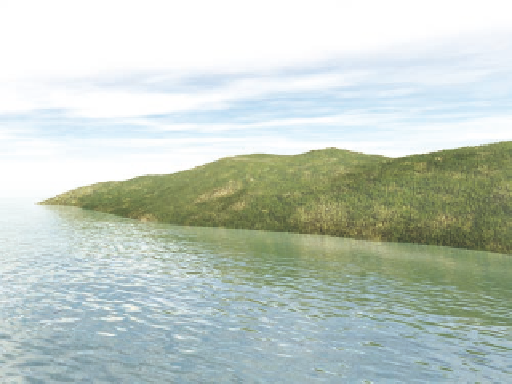Geoscience Reference
In-Depth Information
may seem like jargon to you at first, they are everyday terms
to many geographers because they are used when we moni-
tor atmospheric conditions and predict the weather on any
given day.
From the discussion about relative humidity, you might
surmise that condensation must be somehow related to the
cooling of air to the dew-point temperature. This is a correct
assumption, but, as you might also imagine, the process is more
complex than it first appears. After all, nighttime cooling can
cause condensation of near-surface water vapor if the satura-
tion point of the air is reached immediately above the ground,
resulting in dew or even frost if vapor changes directly to ice
crystals. Neither of these processes, however, is associated with
precipitation.
Precipitation occurs only when a substantial parcel of air
experiences a steady drop in temperature below the dew-point
temperature, which can only occur if the air parcel is some-
how lifted enough for it to cool adiabatically. For purposes
of discussion, think of a parcel of air as having a diameter of
about 300 m (1000 ft) with uniform humidity and temperature
characteristics.
Recall from Chapter 6 that the dominant way in which a
parcel of air rises or descends is through changes in atmospheric
pressure. When this kind of movement occurs, the air either ex-
pands as it rises or compresses as it descends (Figure 7.15 on
next page). Of particular relevance here is that air cools as it
rises and expands and warms when it descends and compress-
es. It is important to note that these temperature changes are
in-
ternal
to the rising or descending air parcel and occur without
any exchange of heat with the surrounding atmosphere. These
kinds of temperature changes are called
adiabatic processes
because they result solely from expansion and compression of
air due to pressure fluctuations.
No wind
Lower relative humidity
over land
High relative humidity
over water
(a)
With wind
Water molecules blown over
land, away from water
(b)
Figure 7.14 Wind and evaporation.
(a) When the wind is
calm, little evaporation occurs because the relative humidity
of the air mass above the water is high. (b) More evapora-
tion takes place during windy days because water vapor
continually flows away from the moisture source.
The Dry Adiabatic Lapse Rate
In most cases that involve a parcel of surface air, the air is not
saturated, and the relative humidity is thus less than 100%.
Imagine that this parcel begins to rise and expand because it is
warmer than the surrounding air. When these conditions occur,
the air temperature decreases at what is called the
dry adia-
batic lapse rate (DAR)
as the air starts to rise. This rate is not
to be confused with the
environmental lapse rate
that was dis-
cussed in Chapter 5. The environmental lapse rate refers to the
average change in temperature of
still
air with altitude, which
away from the source, making room for more water molecules
to move into the air. Figure 7.14 shows an example of this con-
cept. This is also why fans are useful cooling devices; they
create a wind to increase evaporation.
Adiabatic Processes
When water evaporates into vapor, it moves into the at-
mosphere where it exists in the gas phase. It can, howev-
er, recondense into liquid water to form clouds where it is
temporarily stored until it either vaporizes again or falls to
Earth as precipitation. This section deals with the processes
through which condensation occurs, with the ultimate goal
of providing the foundation for understanding the precipi-
tation process. Although many of the terms in this section
Adiabatic processes
Changes in temperature that occur due
to variations in air pressure.
Dry adiabatic lapse rate (DAR)
The rate at which an unsatu-
rated body of air cools while lifting or warms while descending.
This rate is 10°C/1000 m (5.5°F/1000 ft).

























































































































